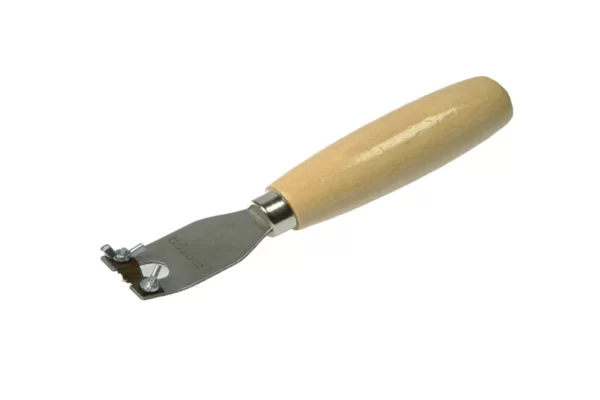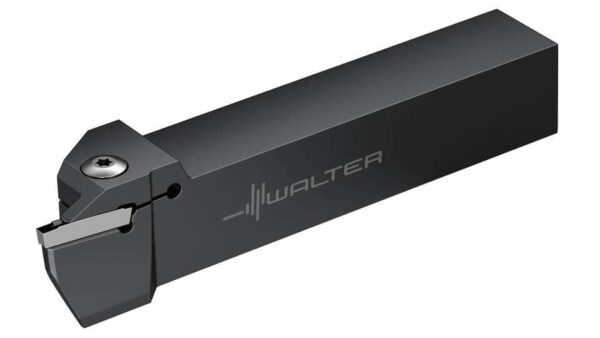CNC Grooving or slot milling are specialized techniques primarily used in CNC machining operations for generating precise grooves on workpieces. For industries that prioritize precision and quality, understanding and applying grooving operations effectively is crucial.
This article aims to provide a comprehensive insight into the multifaceted domain of grooving operations in machining, highlighting their importance, applications, types, tools, and processes.
Grooving Operations
Grooving operations, often known as recessing or necking operations, are specialized machining processes primarily executed on lathes. They are typically performed to create precise, narrow grooves on the exterior or interior of a workpiece, facilitating a variety of functions.
The Basics of Grooving
In a nutshell, grooving involves feeding a cutting tool perpendicular to the workpiece’s rotation axis. This method results in the formation of a groove, a narrow recess in the workpiece material. The cutting tool used for this operation is typically narrow and sharp to achieve the desired precision.
Grooving vs. Parting
Although parting and grooving are often mentioned together, they are distinct processes. Parting involves cutting off a section of the workpiece completely while grooving creates a recess without separating any part of the workpiece.
Importance of Grooving Operations
The role of grooving operations in machining is multifaceted. They are not only essential for creating specific features on a workpiece but also significantly impact the overall quality of a machined product.
| Importance | Why? |
|---|---|
| Precision | Grooving operations are indispensable when high precision is required. They allow manufacturers to create intricate designs and patterns on workpieces, leading to the production of high-quality and detailed components. |
| Versatility | Grooving operations are versatile and applicable to a variety of materials, including metals, plastics, and wood. This versatility makes them a valuable asset in industries such as aerospace, automotive, electronics, and many more. |
Click to download: Different types of Grooving techniques, as well as corresponding grooving tools and technical details
Types of Grooving Operations
Grooving operations can be classified into several types based on the location of the groove, the direction of feed, and the type of tool used.
External and Internal Grooving
External grooving
Internal grooving
External grooving is performed on the outer surface of the workpiece, while internal grooving is carried out within a hole or opening in the workpiece. The choice between external and internal grooving largely depends on the design specifications of the part being machined.
Read more: a comparative study of internal vs external grooving
Axial, Radial, and Angular Grooving
Axial grooving diagram
Radial grooving diagram
Angular grooving diagram
Axial grooving involves feeding the cutting tool parallel to the workpiece’s axis of rotation, while in radial grooving, the feed is perpendicular. Angular grooving, on the other hand, involves feeding the cutting tool at a specified angle to the workpiece’s axis.
Read more: axial vs radial vs angular grooving: a comprehensive guide
Tools Used in Grooving Operations
The tools used for grooving operations are typically made of high-speed steel (HSS) or cemented carbide. They feature a narrow, pointed tip to create precise grooves.
- Hand Grooving Tools
Hand-grooving tools are commonly used in manual lathes. They offer simplicity and cost-effectiveness, but they require a skilled operator and are generally less precise than machine tools.
- Machine Grooving Tools
Machine grooving tools are used in CNC machines, offering high precision and consistency. They can be automatically controlled, which makes them suitable for large-scale production. These tools come in a variety of shapes and sizes, each designed for a specific type of grooving operation.
Grooving Processes in Machining
Grooving operations encompass several stages, each playing a vital role in ensuring the successful production of accurate and consistent grooves.
Step1: Planning and Designing
Before the actual machining process begins, the groove’s specifications, including its size, depth, and location, are meticulously planned and designed. This design stage often employs CAD (Computer-Aided Design) software to generate an accurate model of the final product.
Step2: Setting Up the Machine
Once the design is finalized, the machine is set up for the grooving operation. This involves selecting the appropriate grooving tool based on the design requirements and installing it in the lathe or CNC machine. The workpiece is then mounted and correctly aligned to ensure precision during the operation.
Step3: Executing the Grooving Operation
The grooving operation is then performed according to the planned process. In a manual lathe, the operator carefully controls the tool’s feed and depth of cut. In a CNC machine, the program controls these parameters, ensuring high precision and consistency.
Step4: Quality Inspection
After the grooving operation, the resulting workpiece is inspected for accuracy and quality. This may involve visual inspection, measurement with gauges, or even more advanced methods such as CMM (Coordinate Measuring Machine) inspection. If any discrepancies are found, adjustments are made in the machining process.
Read More: The Grooving Process: From Design, Planning to Quality Inspection
Advancements in Grooving Operations
With rapid advancements in technology, grooving operations have become more efficient and precise. The advent of CNC technology has significantly enhanced the capabilities of grooving operations, enabling more complex designs, higher precision, and faster production times.
- CNC Grooving: CNC grooving has revolutionized the machining industry. With its ability to execute complex and precise operations consistently, it is increasingly being used in industries requiring high-precision components.
- Use of Advanced Materials: Advanced tool materials like cubic boron nitride (CBN) and polycrystalline diamond (PCD) have improved grooving operations. With high hardness and heat resistance, they allow for faster machining and longer tool life.
Conclusion
Grooving operations play a pivotal role in the machining industry, enabling the production of intricate and high-quality components. With advancements in technology, these operations have become more efficient, precise, and versatile. Whether it’s for creating a keyway on a shaft or a seal ring groove on a cylinder, grooving operations are an indispensable part of modern manufacturing.
At Prolean, we leverage state-of-the-art CNC grooving technology to deliver exceptional grooving services, ensuring high precision and quality in every component we manufacture. Our experienced team and advanced manufacturing processes make us a trusted partner in your manufacturing journey.
FAQs
What is grooving in machining?
Grooving is a machining operation that creates a narrow recess (groove) on a workpiece. It’s typically performed on a lathe and is crucial for creating specific features on components.
What are the types of grooving?
Grooving operations can be classified as external or internal, based on the groove’s location. They can also be categorized as axial, radial, or angular, depending on the direction of the cutting tool’s feed.
What tools are used for grooving operations?
Grooving operations typically use narrow, sharp tools made of high-speed steel (HSS) or cemented carbide. Hand tools are commonly used in manual lathes, while machine tools are utilized in CNC machines for increased precision and consistency.
How does CNC technology impact grooving operations?
CNC technology has revolutionized grooving operations, enabling higher precision, consistency, and efficiency. It allows for automated control of the machining process, making it ideal for complex designs and large-scale production.
Why are grooving operations important in manufacturing?
Grooving operations are vital for creating specific features on a workpiece. They offer high precision and versatility, making them essential in industries that prioritize quality and detail. They are also key in facilitating the assembly and functionality of various components.















0 Comments